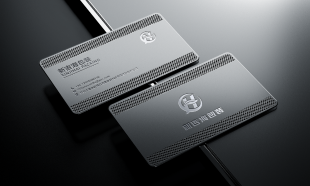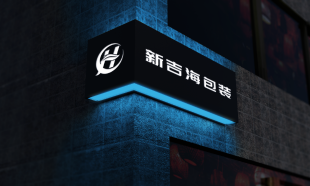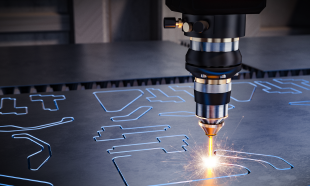What is stainless steel? Stainless Steel is the abbreviation of stainless and acid resistant steel. The steel that is resistant to weak corrosion media such as air, steam, water or has no rust is called stainless steel; The steel that is resistant to chemical corrosion medium (acid, alkali, salt and other chemical etching) is called acid resistant steel. Due to the difference in chemical composition, their corrosion resistance is different. Ordinary stainless steel is generally not resistant to chemical medium corrosion, while acid resistant steel is generally stainless. Common tableware in our lives (such as stainless steel dishes and chopsticks), stainless steel guardrails for home decoration, elevator decorative panels, etc. are acid resistant steel and high-end steel. Steel pipes used for building materials, steel used for moulds, screws, springs, etc. are generally made of ordinary stainless steel, which will rust. Therefore, the surface needs to be treated. They are non resistant to chemical medium corrosion and belong to ordinary steel. What are the types of stainless steel? Stainless steel is usually divided into martensitic steel Cr system, ferritic steel Cr system, austenitic steel Cr Mn Ni system/Cr Ni system, austenitic ferritic (duplex) Cr Ni system stainless steel and precipitation hardening stainless steel according to the structure state. In addition, it can be divided into chromium stainless steel, chromium nickel stainless steel, chromium manganese nitrogen stainless steel and other steels according to the composition. Three figures are used to indicate various standard grade malleable stainless steels. According to composition, it can be divided into Cr series (400 series), Cr Ni series (300 series), Cr Mn Ni series (200 series), heat-resistant chromium alloy steel (500 series) and precipitation hardening series (600 series). The 200 series belongs to ordinary stainless steel (the 200 series also has special high-end steel grades). The 300 series and 400 series belong to high-end steel grades. The 500 series and 600 series belong to high-end medium fighters, with special steel grades.
201202, etc.: Manganese is used instead of nickel, which has poor corrosion resistance. 300 series: chromium nickel austenitic stainless steel 301; good ductility, which is widely used as a cheap substitute for 300 series in China. It can also be hardened rapidly by machining. Good weldability. The wear resistance and fatigue strength are superior to 304 stainless steel. 302: The corrosion resistance is the same as 304, and the strength is better due to the relatively high carbon content. 303: It is easier to machine than 304 by adding a small amount of sulfur and phosphorus. 304: general model; 18/8 stainless steel. Products such as: corrosion resistant containers, tableware, furniture, railings, medical equipment. The standard composition is 18% chromium plus 8% nickel. It is a non-magnetic stainless steel whose metallographic structure cannot be changed by heat treatment. GB grade is 10Cr18Ni9Ti. 316: After 304, the second most widely used steel is mainly used in food industry, clock and watch accessories, pharmaceutical industry and surgical equipment. Molybdenum is added to obtain a special corrosion resistant structure. As it has better chloride corrosion resistance than 304, it is also used as "marine steel". SS316 is usually used in nuclear fuel recovery devices. Grade 18/10 stainless steel generally conforms to this application grade.
201: Manganese is used instead of nickel, with poor corrosion resistance, no acid and alkali resistance, and easy to rust. It is commonly used for structural parts, such as reinforced fasteners, spring, screws, rivets, etc. 301: It has good ductility and is used to shape products. 301 is slightly harder than 304, and it is difficult to stretch. Good weldability, wear resistance and fatigue strength are superior to 304 stainless steel. The corrosion resistance is worse than 304. It is magnetic and easy to rust. It is commonly used for structural parts, such as reinforced fasteners (in earlier smart phones, this model was basically used for the steel sheet used for injection molding of the front shell), spring, spring, screw, rivet, etc. 304: It is a universal stainless steel material, which is also good at high temperature resistance. Generally, the service temperature limit is less than 650 ℃. 304 stainless steel has excellent stainless steel corrosion resistance and good intergranular corrosion resistance, and is nonmagnetic. Commonly used in mobile phone shells, appearance parts of electronic products, corrosion resistant containers for industrial use, tableware for food, furniture, railings, medical equipment and other anti rust properties: 304>301>201
What are the effects and processes of stainless steel appearance? 1. The surface processing effects can be divided into wire drawing effect, sand blasting effect, and the thickness depends on the abrasive belt. The general grade can be divided into 120/150/180/220, etc. In addition, there are high gloss mirror effect, corrosion fog effect, laser carving fog effect, and machining CD pattern effect. 2. If 304 or 316 stainless steel is used as the surface electroplating effect and the appearance effect is used as the high gloss lens, the ideal effect can be achieved by directly making the primary color instead of electroplating. If it is required, electroplating should be done. The electroplating coloring can be colorful, depending on the color number. 3. Product processing: raw materials → stamping → polishing → (wire drawing or sand blasting or other) → cleaning → electroplating → character laser carving or character silk screen printing → packaging is completed. 4. The appearance effect can be tested according to the customized requirements.
Stainless steel is more used in internal structures in our electronic products because of its complex structure and limited manufacturability. The appearance process treatment is also relatively limited. In the product process, only stainless steel will be specified. As a structural engineer, he should know which models of stainless steel are applicable. In the manufacturing process provided to the supplier, he should specify which models are 301 and 304.
Aluminum is a silver white light metal. It is malleable. Goods are often made into rods, sheets, foils, powders, ribbons and filaments. It can form an oxide film to prevent metal corrosion in humid air. The aluminum powder treated with acid can burn violently when heated in air, and emit dazzling white flame. Easily soluble in dilute sulfuric acid, nitric acid, hydrochloric acid, sodium hydroxide and potassium hydroxide solution, insoluble in water, but can slowly react with hot water to generate aluminum hydroxide, with a relative density of 2.70/cm ^ 3. The melting point is 660 ℃. The boiling point is 2327 ℃. Aluminum products are widely used for their light weight, good electrical and thermal conductivity, high reflectivity and oxidation resistance
Profiles: aluminum profiles, aluminum pipes, aluminum bars (solid pipes), aluminum bars (solid profiles), aluminum wires, aluminum welding rod plates: aluminum plates, aluminum foils, aluminum strips (coils)
Aluminum grade 1 ××× Series: pure aluminum (aluminum content is not less than 99.00%) 2 ××× Series: aluminum alloy 3 with copper as the main alloy element ××× Series: aluminum alloy 4 with manganese as the main alloy element ××× Series: aluminum alloy with silicon as the main alloy element (common series of industrial electronic products) 5 ××× Series: aluminum alloy with magnesium as the main alloy element (common series of industrial electronic products) 6 ××× Series: aluminum alloy 7 with magnesium as the main alloy element and Mg2Si phase as the strengthening phase ××× Series: aluminum alloy 8 with zinc as the main alloy element ××× Series: aluminum alloy 9 with other elements as the main alloy elements ××× Series: the second letter of the spare alloy group designation indicates the modification of the original pure aluminum or aluminum alloy, and the last two digits of the designation indicate different aluminum alloys in the same group or the purity of aluminum.
The following are the properties of commonly used brands and the application of 1100 in processing parts and components that require good formability and high corrosion resistance but do not require high strength, such as chemical products, food industrial devices and storage containers, sheet metal processing parts, deep drawing or spinning concave vessels, welding parts, heat exchangers, printed boards, nameplates, reflective appliances 2011 fast cutting alloys, which have good machinability and high strength. However, the corrosion resistance is poor. It is applicable to volume shaft, optical components, screw heads, screws and machined products with good cutting performance. 3003 is used to process parts and components with good formability, high corrosion resistance and weldability, or work with both these properties and higher strength than 1XXX series alloy, such as kitchenware, food and chemical product processing and storage devices, and tanks and cans for transporting liquid products, Various pressure vessels and pipes processed with thin plates 4A01 belong to the series with high silicon content, which has the characteristics of heat resistance and wear resistance. Generally, the silicon content is between 4.5-6.0%. It is a building material, mechanical part and forging material. Welding material 5052 is the most representative alloy with medium strength. It has good corrosion resistance, dissolution and formability, especially high fatigue strength and seawater resistance. It is used to manufacture 5083 alloy for welding structures such as aircraft fuel tank, oil pipe, sheet metal parts of traffic vehicles and ships, instruments, street lamp brackets and rivets, hardware products, etc. It is the highest strength corrosion resistant alloy among practical non heat treatment alloys, and is suitable for welding structures. Corrosion resistant alloy of 6061 heat treatment type for ships, vehicles, low temperature vessels and pressure vessels with good seawater resistance and low temperature characteristics. T6 treatment can have a very high endurance value, but the strength of the welding interface is low. Therefore, it is suitable for extruding alloy with medium strength of 6N01 for screws, hinged ships, vehicles, and land structures. It has the strength between 6061 and 6063. The extruding punching and quenching properties are good, and it can be used as large thin fleshy materials with complex shapes, with good corrosion resistance and welding properties. It is applicable to typical extrusion alloy of 6063 for vehicles, land structures and ships. Its strength ratio is low than 6061, and its extrudability is good. It can be used as the shape material of complex section shape, and its corrosion resistance and surface treatment are both good for buildings, highway guardrails, high fences, vehicles, furniture, household appliances and decorations. The 7072 electrode has low potential. It is mainly used for anti-corrosion covering leather, and is also suitable for heat exchanger fins. One of the alloys with the highest strength among the leather, radiator, air conditioner aluminum foil and ultra-thin strip 7075 aluminum alloy of aluminum alloy alloy sheet, but with poor corrosion resistance, and the covering leather of 7072 can improve its corrosion resistance, but the cost is increased. Suitable for aircraft, ski poles and thick plate forgings
1. Anodizing after sand blasting or wire drawing 2. Electrophoretic painting 3. Electrostatic powder spraying after polishing, fluorocarbon spraying 4. Titanium and titanium gold plating or electroplating 5. Heat transfer printing of various patterns of wood grain 6. Polymer PVC coating
The following are the common brands of electronic products
The product requirements are relatively hard, and the surface treatment is coarse wire drawing or coarse sand surface. 5000 series aluminum alloy is selected, commonly used: 5052
Products with high surface treatment requirements shall be free of sand holes and profile traces. 6000 series aluminum alloy shall be selected. Common use: 6063/6061
The product is required to be cheap and needs to be rechecked for stretching shape. 2000 series pure aluminum is selected, commonly used: 2011
The product has high strength and hardness, and needs to be used as a load-bearing structure. 7000 series aluminum alloy is selected. Common use: 7075
After the structural design is completed, the process description can be marked with materials, material grades and surface treatment methods. For example: aluminum profile, brand 6063, surface anodizing, sandblasting and spraying










